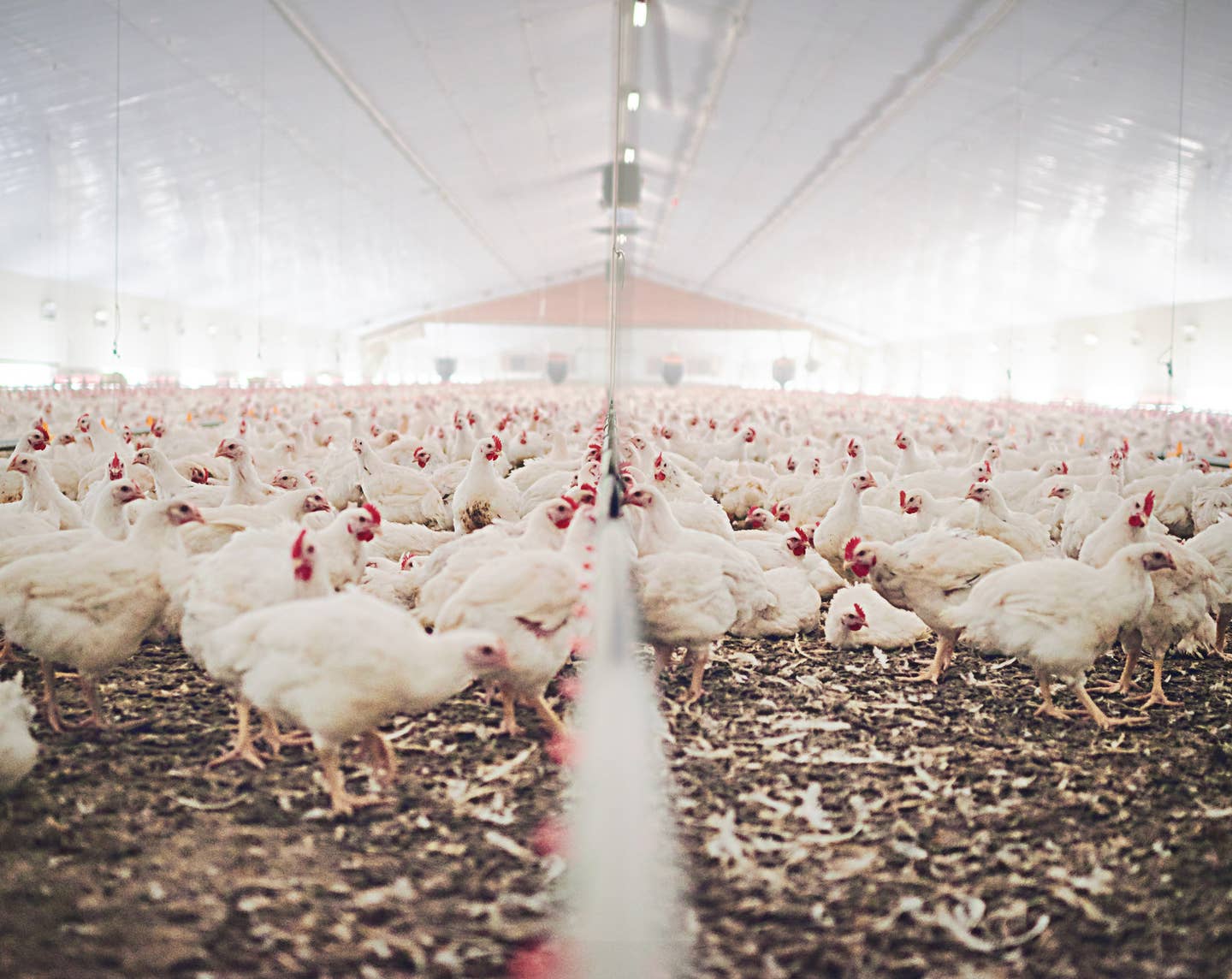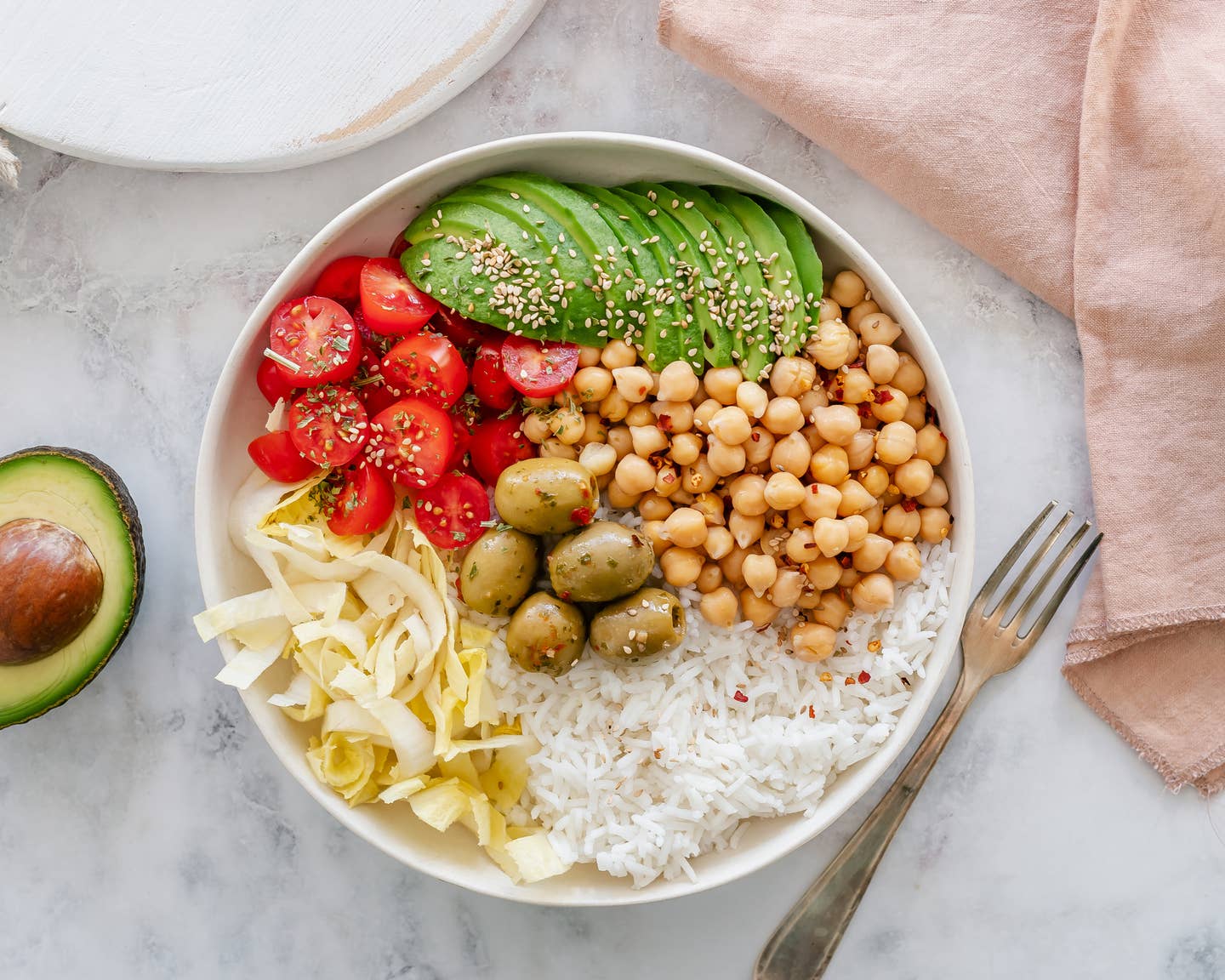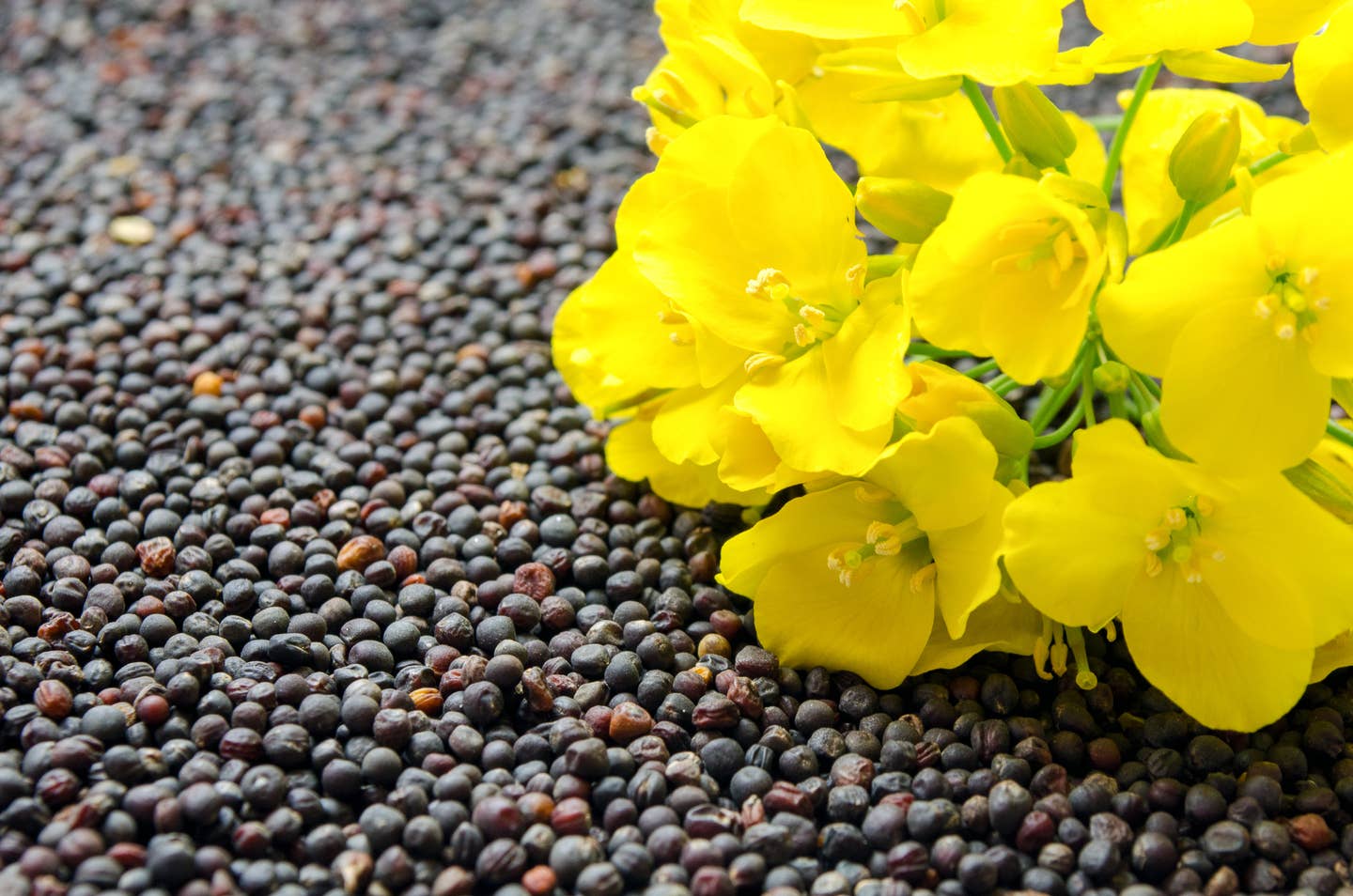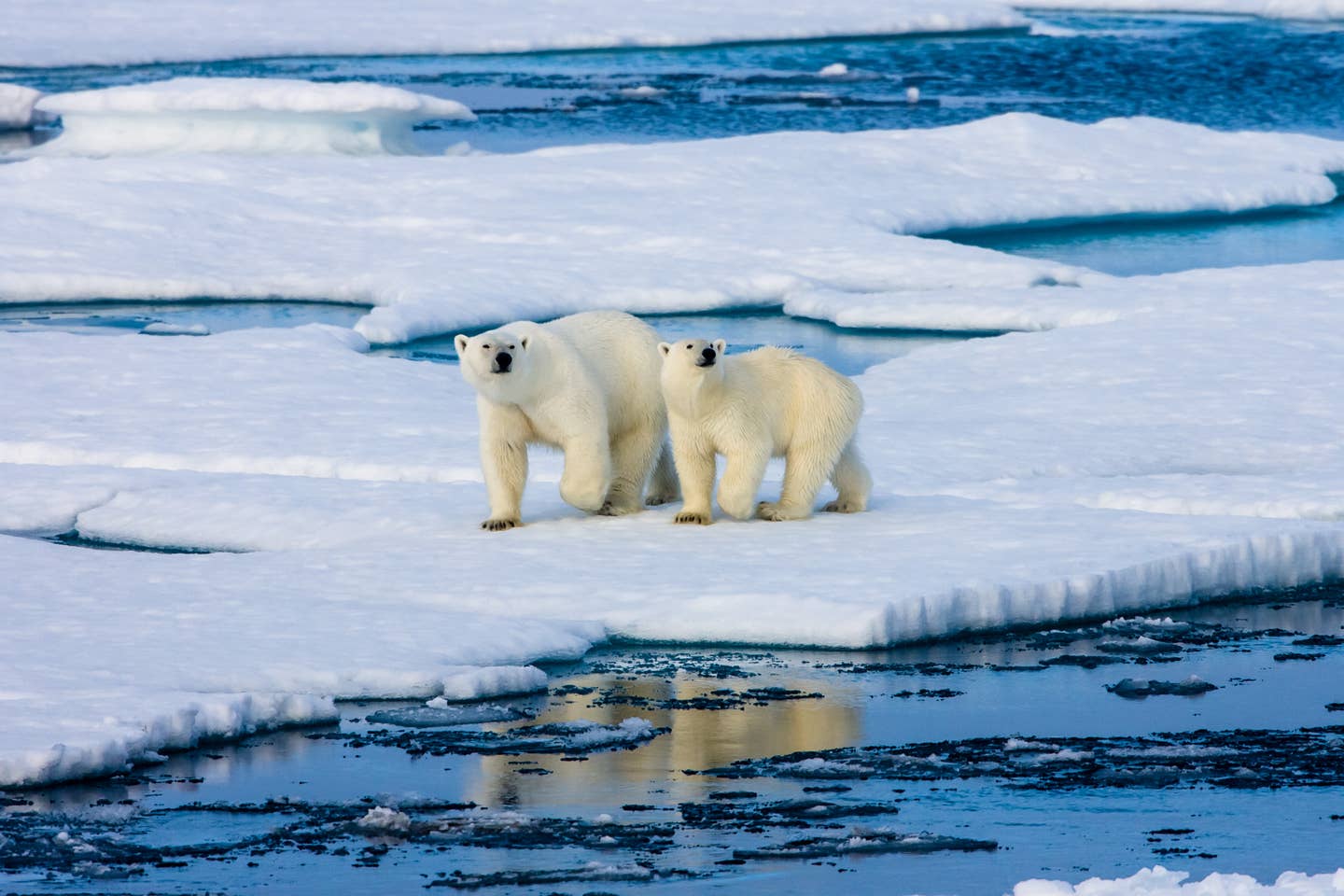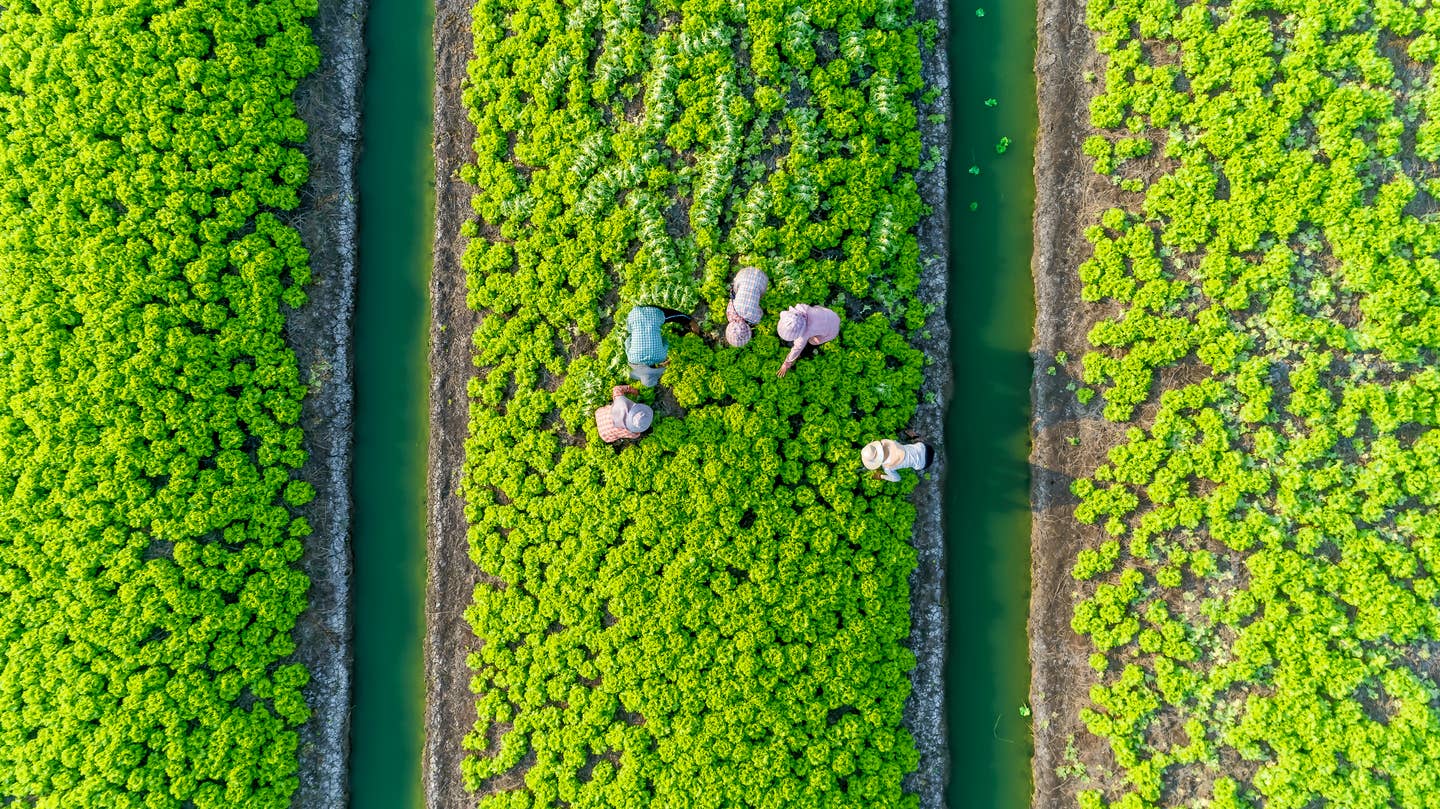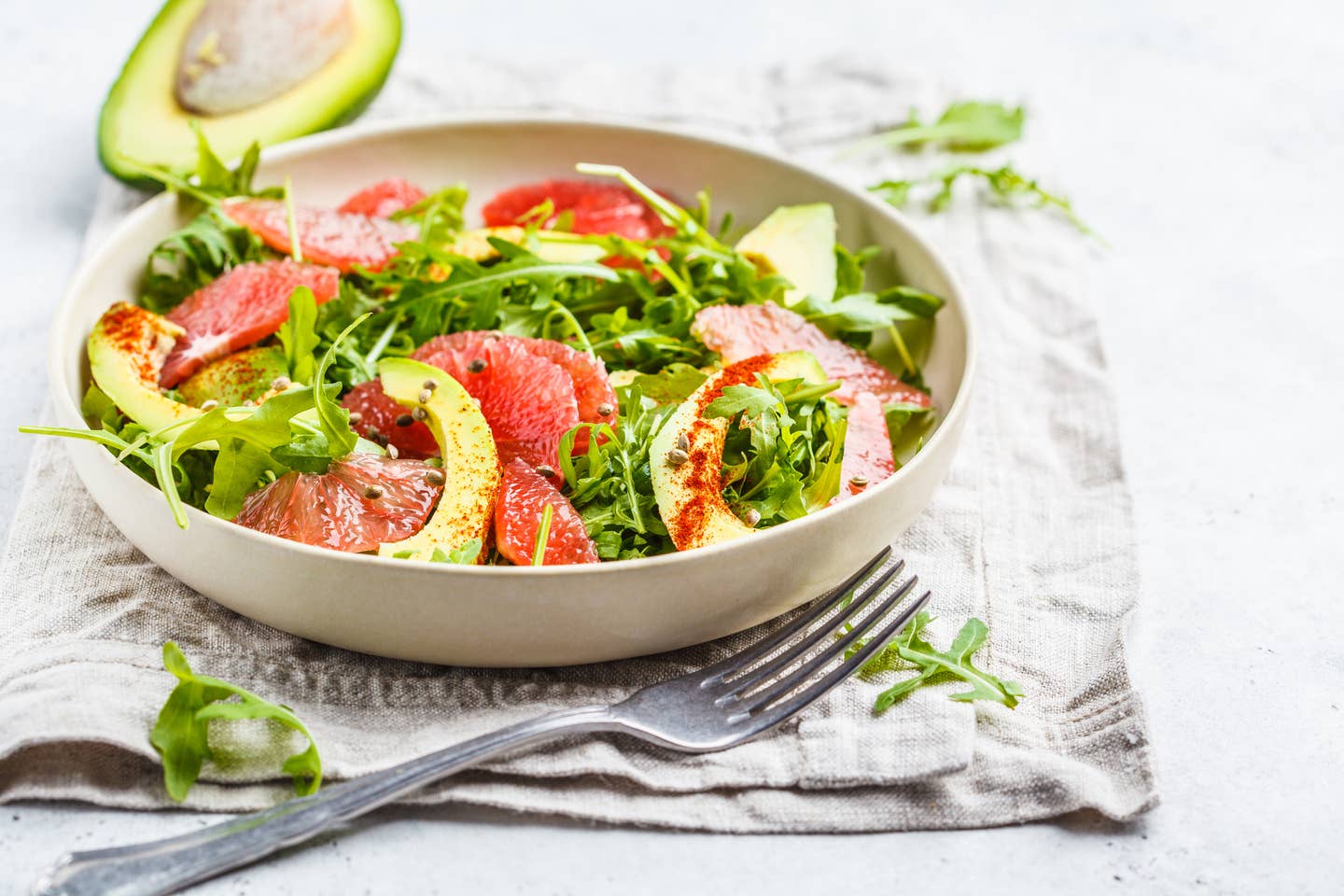
What’s Even More Sustainable Than Shopping Local? Eating Plant-Based
If you are concerned with climate change and trying to live a more "sustainable" lifestyle, chances are you use LED lightbulbs, refillable metal water bottles, have switched from plastic to paper straws, are in the market for a hybrid car, and you "shop local" every chance you get.
Now an expert weighs in on the best way to be a sustainable consumer. It starts by educating yourself about the ecological impact of the food you eat, and it's as easy as understanding the impact of the ingredients you choose and seeking out environmental impact labels.
Buying from local or regional farmers who grow and raise your food, so that it doesn't have to get shipped to save the CO2 used in transportation is a great idea, and everyone should do it whenever practical. But doing so only saves about 10 percent of the total greenhouse gases that are produced to grow raise and process most of the food we eat, according to an expert who has analyzed where most of the climate impact of our food comes from. It is before the food ends up on the truck, she explains, and it is one more reason to switch to plant-based.
How to Eat More Sustainably
"If sustainability is your primary motivation, then relacing your meat and dairy for vegetables, legumes and taking a plant-based approach makes more sense," says Sandra Noonan, the Chief Sustainability Officer of Just Salad. As consumer awareness grows about the environmental cost of the food we eat, it becomes clear to sustainability-minded consumers, who are also known as "climatarians" that shifting to a plant-based diet is a sound move.
Raising farmed animals, especially livestock like cattle, dairy cows, and pigs, as well as poultry and lamb, is more costly to the environment than many other manmade sources of greenhouse gases. Animal agriculture is the third-highest contributor to greenhouse gases emitted by humans each year, after transportation and industry. Climate experts want us to be aware of how the choices we make relating to what ends up on our plate has a profound impact on global warming. One new report published by Stanford University biochemists says that by shifting away from meat and dairy we could lower our climate impact by 68 percent.
A salad with legumes, quinoa, greens, vegetables, and protein-packed tofu has a vastly lower climate impact than a ham and cheese sandwich or burger – and is also much better for your health. That's the thinking behind adding a new measure to food labels, such as the Carbon Equivalent metric that now show up next to calories on your Just Salad nutrition label.
From Calories to Carbon Equivalents
Once upon a time, consumers just counted calories. But as we've become smarter about the nutritional impact of the types of food we ate and more aware of the macronutrients in our food, we wanted to see the breakdown of carbs, protein, and fats in our food, and nutrition labels now show us everything from added sugar to how much of our fat is from saturated fat (from animal products that is known to contribute to heart disease) versus from unsaturated fat (from plants like avocados and olives, that is considered healthier and even heart protective).
Now, companies like Just Salad and others are adding labels to ingredients and the food they serve up, that shows the environmental impact of our dish, how much CO2 was burned, and methane was released in the growing, harvesting, processing, and transporting of our food from soil to bowl and beyond.
"We hired a company to do a cradle to grave analysis of how much Carbon Equivalents our food requires to go from planting to growing to harvesting, processing, and transporting," says Noonan. One of the first of her kind, she was hired after writing to the company's CEO to compliment Just Salad on their re-usable bowl program, where you bring back your bowl and they refill it for you.
Shop Local is only part of the story
"Shop Local is a wonderful concept and one that I support wholeheartedly," says Noonan. "And depending on your priorities it is one helpful measure toward sustainability, Supporting local farmers is always a great idea," she adds. But it doesn't have a huge impact on our carbon footprint, since most of the greenhouse gases spent on producing food happen earlier than trucking it to your local market or store.
But the full story is more complicated, like many other ecosystems, and only about 10 percent of your food's carbon emissions are spent on the miles they travel from the farm to your store. Most of the other 90 percent is used up in growing and raising the food. "A local steak is still going to cost way more in terms of carbon emissions and greenhouse gases than a package of Brussel sprouts that had to travel further to reach your doorstep," she adds.
Rather than only be concerned with the distance food traveled, we should be cognizant of what it took to grow or raise the food we choose, she adds. The facts are these, according to The Role of Animal Agriculture on Greenhouse Gas Emissions, from Texas A&M Agrilife Extension and the Food and Agriculture Organization of the UN.
The impact of raising animals on greenhouse gases (GHG)
- 2 primary gases are produced when raising animals, methane and nitrous oxide
- 1 molecule of methane will trap 21 times more heat than carbon dioxide (CO2)
- 1 molecule of nitrous oxide (NO) will trap 310 times more heat than carbon dioxide.
- If you are looking to eat a low-carbon footprint diet, focus on plant-based foods
- Greenhouse gases are a combination of CO2, methane, and nitrous oxide (NO)
What can we do to be more sustainable?
Go vegan, or eat more plant-based. A vegan diet has the lowest carbon footprint of any diet, according to Green Eatz. at just 1.5 tons CO2e (Carbon Dioxide Equivalent). You can reduce your footprint by a quarter just by cutting down on red meats such as beef and lamb. The carbon footprint of a vegetarian diet is about half that of a meat-centric diets
Choose bowls, cups, and bottles that are reusable instead of plastic. Bring your bottle or bowl to the store for drinks, salads, or take-out dishes. Seek out companies that align with your values. At Just Salad, the company sells a reusable bowl that they will refill each time you buy your lunch there. The usual bowl is made of a disposable material from upcycled sugar cane. That is the material left in the field when the sugar cane is harvested. Instead of going to waste they press it into cardboard that is also compostable.
Question what goes into our unseen waste in the food systems. Where does the container or plastic bottle end up when recycled? Is each new plastic container we use simply made into more plastic, which eventually gets into the ocean or landfill?
Eat plant-based, and avoid meat and dairy. There are dozens of scientifically-proven health benefits to eating plant-based. It lowers your risk of heart health, cancer, dementia, and stroke. And it's better for the environment: Vegetables, fruit, whole grains, legumes, and especially peas and beans are all more sustainable crops than raising livestock.
Choose crops that are better for the planet. Peas, beans, buckwheat, and okra are all crops that actually put nutrients back into the soil. Farmers are eager to grow cover crops that act as a natural fertilizer and put nitrogen back into depleted fields, using these crops as "green manure" – so seek out those foods. One crop that's efficient at capturing CO2 and returning it to the soil is sorghum, and scientists are seeking ways to use it to trap even more CO2 in the air and deliver it back to the earth, thereby helping to reverse climate change.
Look for Eco-labels, such as on Just Salad's menu. More and more companies are showing that they care about the environmental impact of the food they make. The eco-label on Just Salad's menu is a product of a third-party analysis that looks at the GHG emissions impact of every ingredient on the menu. The score is a composite of what CO2 equivalent is released in growing, producing, processing, and transporting each ingredient, including what happens to food waste. Just Salad and other companies are offering composting at their locations, so if you fail to finish your salad you can compost the organic waste instead of filling landfills with it.
Instead of Counting Calories, Count Carbon Equivalents
"Food is breaking planetary boundaries for Carbon Emissions," says Noonan. "The problem is breaking out of the mindset that all you have to do is eat locally to be sustainable." Research shows that shifting less than a day's worth of calories from red meat and dairy to vegetable-based or plant-based diets achieves more emissions reductions than if you were buying meat and dairy locally.
"Buying locally-sourced beef is never going to be a better option than shifting to a plate of all vegetables, legumes, fruit, and whole grains," she explains. "Locally raised beef is still worse for the environment than buying Brussels sprouts that grew further away and had to be shipped to your store."
Dietary "shifting" is the answer
Dietary shifting, away from meat and dairy and toward plant-based diets, is more effective if sustainability and greenhouse gases are what you care about, Noonan explains.
"She adds, "The eco-labels on our website and app help the eco-conscious consumer. So if that is your deciding factor, you can see an easy way to make that choice. Just as you can see calories, carbs, fat, and protein, now you can find out what your food costs the planet."
"I love buying local, and supporting local farmers, so the best thing to do is to do both," she suggests. "Shift your meal from meat and dairy to plant-based and also buy local produce."
Bottom Line: To eat sustainably, shift to eating plant-based and reuse containers
The unseen cost of your food includes the carbon footprint that it takes to grow, process, transport, and package every ingredient. To be more sustainable, think in terms of eating more plant-based and reusing your containers, doing away with plastic.
For more great content like this, check out The Beet's Environmental News articles on how to be a more sustainable and eco-minded consumer.
More From The Beet
